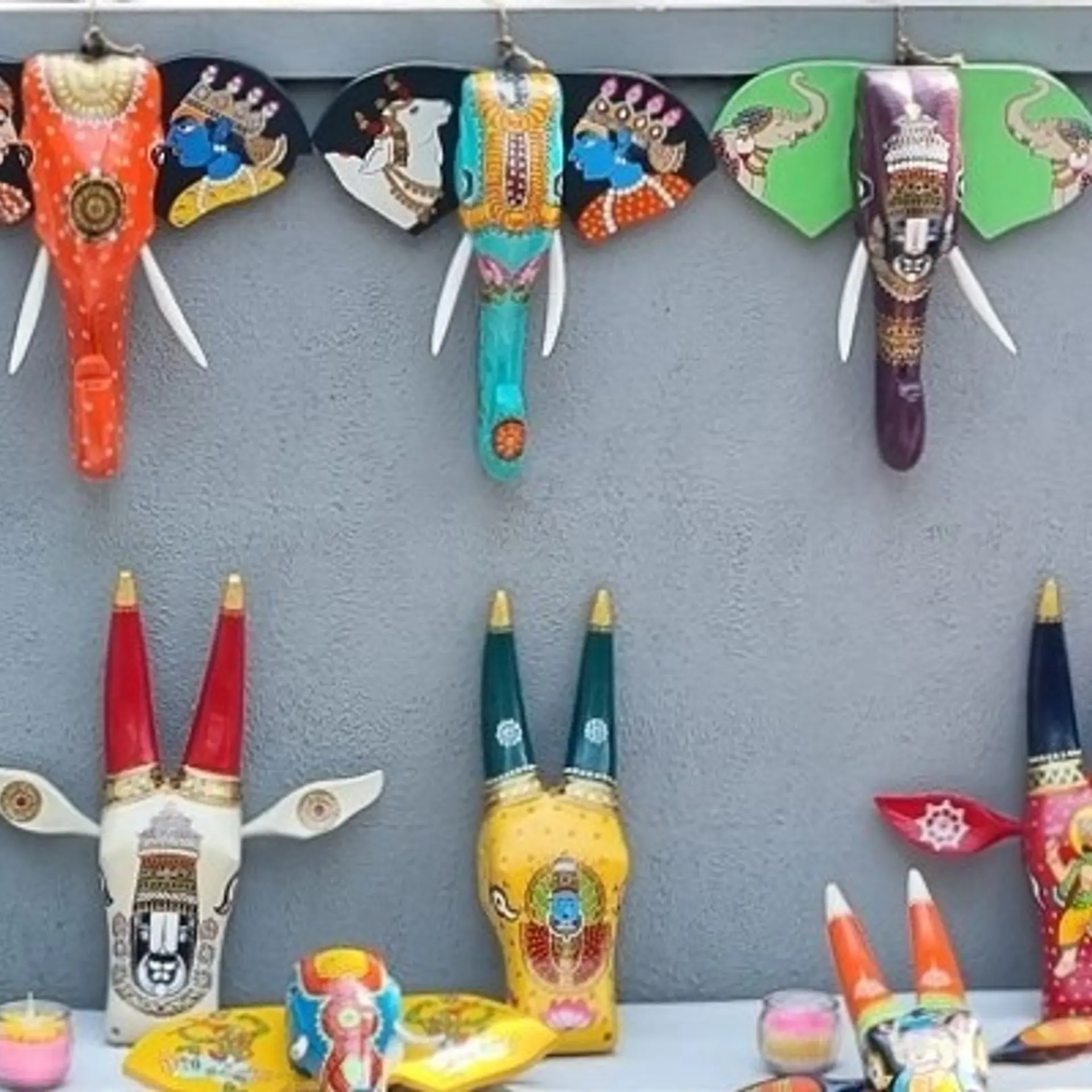
Woodstock Fund
View Brand PublisherMegatrends that will propel the growth of Web3 - Woodstock Fund’s investment thesis
With its recently unveiled Web3 investment thesis, Woodstock Fund, a pioneer in Web3 investing in India spells out the megatrends that propel the growth of Web3.
When the World Wide Web first became a phenomenon in the 1990s, many websites looked like, well, scanned PDF documents with text, visuals and clickable links.
However, that soon changed as Web 2.0 ushered in a more participatory experience, which led to an explosion of user-created content.
However, the web as we now know has also seen all kinds of challenges, from cybercrime to surveillance capitalism to widespread misinformation and a rapidly worsening erosion of trust.
Web3, by its design, could offer better resistance to those problems. It is open-source, borderless, and extremely fast-paced, and therefore easy to see why it's attracting investor interest.
With its recently unveiled Web3 investment thesis, which they hoped would be helpful to founders, investors, enterprises, and other stakeholders, Woodstock Fund, a pioneer in Web3 investing in India spelt out the megatrends that it believed would propel the growth of Web3.
Growth parallels between Web2 and Web3
As of 2022, the global number of holders or users of digital assets is around 300 million. With a greater focus on decentralisation, artificial intelligence, and machine learning, Web 3.0 is expected to be an extension of Web 2.0 to further the motto of creating a space for users by users for increased interaction.

The Woodstock Fund thesis reports that “even though the consensus seems to indicate that we are in a bear market and approaching recession, we are as committed to DLT (Distributed Ledger Technology, or Blockchain) and digital assets as we have always been. We strongly believe that this asset class continues to present an opportunity of a lifetime”.
The growth and relevance of Web3 stem from the answers to a few core questions:
01. Why will new users come to Web 3.0?
Answer: Cheaper and better experiences brought about with increased transparency and technological shifts using blockchain.
02. What type of sticky users will initially move into Web 3.0?
Answer: Those who are underserved and those who are looking for newer or better experiences, primarily the Gen Z, SMBs and gig economy.
03. Where will new sticky capital come from?
Answer: Besides relying on crypto-natives and retail, there is an understanding that with better risk management, regulatory clarity, and sustainable business models, retail and institutional capital could flow in to enable growth at scale.
04. What technological shifts are necessary to enable 1 to 3?
Answer: Identifying credible pathways to enable either complete decentralisation or only necessary decentralisation.
Megatrends that will propel the growth of Web3
01. Convergence-
The process of converging various elements - society, technology, economics, and ecology - will create an amalgam of ideas, knowledge sharing and value creation.
The Web 3.0-based technological growth will lead to the further melting of physical borders that will allow for greater convergence of cultures, communities, economies, and governance globally.
The four components here are:
- Social - Reduced generation gaps, increased purchasing power, breaking down of geographical borders, and support from online and offline infrastructure have aided the growth of the gig economy, therefore supporting the establishment of remote teams from different cultures to work together.
- Technology - The evolution of open-source technologies is leading to accelerated software growth. Although this presents a steep learning curve for end users, the convergence of traditional and emerging technologies will significantly reduce the time and energy taken to adopt emerging tech and solve global issues.
- Economics - Blockchain and digital assets have enabled the creation of community-centric economic incentives, allowing consumers to participate in the growth of the products and benefit from them. Blockchain technology can also enable fractional ownership of previously illiquid assets, enabling equitable participation in economic growth which is essential to bring together a fractured and multi-tiered society.
- Ecology - Web 3.0 will have a greater focus on conscious and sustainable development through less energy-intensive mechanisms and/or the usage of renewable energy sources. Most existing tech streams that are layered solutions will benefit from blockchain integration.
The thesis reports that “Web 3.0’s core principles of borderless and collaborative communities with distributed control (social), consumer-centric incentive structures (economic), and conscious sustainability (ecology), all on the bedrock of blockchain (technology), will be the next inflexion point in the evolution of humankind”.
02.Financialisation –
Over the past two years, Decentralised Finance (or DeFi) has been one of the highlights of digital asset expansion. However, issues such as fragmented liquidity and lacking regulations have prevented the creation of a broad base of the DeFi ecosystem.
While it is true that DeFi is a much more efficient technology than TradFi as it can enable a faster and cheaper borderless flow of capital and liquidity, the aforementioned issues (among many others) ensure that the ecosystem is under greater regulatory scrutiny and needs to evolve to attract sticky capital and demand.
The thesis highlights the Financialisation Trilemma as an overlap between blockchain technology, regulations, and liquidity.
It notes that TradFi/Fintech (ample Liquidity x heavy Regulation) operates on archaic technology and inefficiencies that prevent capital from flowing to the sections of the society that need it the most, whereas Tokenisation (Regulation x Blockchain) has been trying to bridge DeFi to real-world assets but is hampered by inertia, missing rails, and lack of regulatory clarity. This intersection promises sticky demand and real-world utility.
DeFi (Liquidity x Blockchain) is prospering on “regulatory arbitrage”. Its key advantages are its borderless liquidity and access, transparency, token incentives, and censorship resistance. However, this intersection will innovate rapidly but struggle to scale sustainably.
DeFi has proven that financial architecture can be recreated without intermediaries. DeFi aspires to build end-to-end functionality with a neat user experience for the sectors that are most in need of such access.
The end state of the DeFi trilemma is ReDeFi or Regulated DeFi, an intersection of Blockchain, Liquidity, and Regulation, which will most likely require giving up a component critical to the ethos of DeFi – censorship resistance. However, DeFi will innovate much faster than ReDeFi, thus being capable of providing the architecture that the latter can adopt.
Some opportunities in Financialisation are in creating rails for real-world access; building financial blocks such as exchanges, money markets, derivatives, and insurance within DeFi; bringing down capital costs, and providing borrowing access to the underserved.
03.Virtualisation –
The thesis expects the chasm between real and virtual worlds to blur further and progress to shift from tokenomics to better experiences in such virtual worlds.
It notes that virtualisation is about “creating immersive virtual worlds and assets that seamlessly integrate with and extend today’s physical world.” There is a strong emphasis on “virtual = real” which will be the paradigm that will define virtualisation.
Given GenZ’s investment in the online space and how they are primed to create immersive virtual worlds today, we are heading to a future of virtual worlds built on public blockchains in a movement spearheaded by them. Blockchain brings immutable ownership, transferability, composability, and programmability to virtual worlds – properties that are impossible in existing (walled) virtual worlds.
Some examples of blockchain-enabled virtualisation include virtual ownership and fractionalisation of real-world assets, virtualised contracts, gaming and the Metaverse.
Access Woodstock Fund’s comprehensive Web3 investment thesis
With Web3, we're likely in the early innings of what is potentially the biggest technological innovation since the advent of the internet, providing startups, investors and other stake holders with one of the most asymmetric upside opportunities in recent history.
With this in mind, Woodstock Fund has crafted its thesis to be a guide to the Web3 opportunity for founders, investors, enterprises, and other stakeholders.
Top Web3 Ideas for 2023
Further to its investment thesis, the Woodstock Fund research Team has put forth a blog post on top ideas that it believes have a strong potential for bringing the next wave of growth in digital assets and onboarding a billion users in the years to come. Whether you’re a seasoned builder or just getting started in web3, these concepts can provide you a glimpse into what the web3 ecosystem may hold in the future.
Click here for the blog post.







